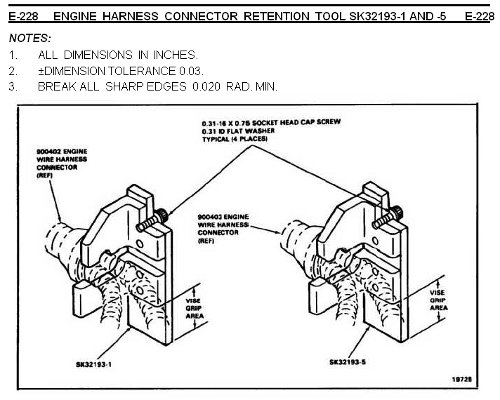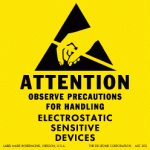All Failures are Human in Origin
Posted by FirmWarez on 20 Aug 2012 in Blog | 2 comments

I’ve been in charge of a few engineering departments. Whether I should or not, I approach my engineers with a certain philosophical mindset. You see, for all the numbers, the hard facts, the mechanical algorithms, engineers and programmers are inherently creative people. In my experience more like artists than the stereotype nerd of Big Bang Theory.
So maybe it’s pretentious. Maybe I’m “doing it wrong”, but I believe that like artists, there is some background philosophy, a raison d’être for people who enter these technical fields. I have always shared with my engineers something of my “artist’s manifesto” or “artist’s statement”; my philosophical beliefs and thoughts that I think connect what we are doing in engineering with why.
An important part of that are thoughts on how we think, how we perceive our art, and how that influences our designs. This blog title is a paraphrase of line from one of my favorite examples of engineering philosophy, a book titled “Engineer to Win”, by Carroll Smith. Smith was Carroll Shelby‘s crew chief; a couple of amazing men who built and campaigned incredible race cars.
Smith argued that race car failures are not due to materials failure. He argued that “there is no such thing as metal failure – all component failures are human in origin.” (“Engineer to Win”, p.134) His viewpoint is that the part was either poorly maintained, poorly operated (abused) or poorly designed. “The part” didn’t fail, somepony did something that resulted in the part failing.

The design phase is what we’re most interested in. First of all, that’s what hacking and making is all about. Second, well, let’s throw in economics. The sooner you prevent a problem the less expensive it is. Even if I realize there is a design issue in a project that’s behind schedule, doing a redesign is cheaper than say letting that flaw make it to market in a product that then has to be recalled, or gets a bad reputation due to firmware failure…or worse yet, in the critical realm of Mr. Smith, gets a driver killed.
It’s a bit of a philosophical stretch for some of us, but I think it is healthy to embrace the concept that your design didn’t fail; you failed as a designer. Like Adam Savage says, failure is always an option. And an opportunity. Learn from your failures. Learn from others’ failures. Embrace the idea that you failed as a designer. Learn why you failed, and then hack yourself in to the maker who never has that failure again.
Engineering is a history of colossal, catastrophic failure. The best do it. The best learn from it. In another example I use with my engineers, from yet another auto racing book, “The Anatomy & Development of the Sports Prototype Racing Car”, Ian Bamsey tells the story of the aerodynamic development of the Porsche 917.
The 917 family includes some of the most amazing sports racing prototypes ever created. The performance figures are still impressive: 0 to 124 MPH in 5.3 seconds. Top speed in excess of 240 MPH. All this in a machine that was made in 1970. No on-board computer controlled engine management, or anti-lock brakes, or traction control. One variant, the 917/30, cranked 1,580 HP out of a 5.4 liter turbo-charged engine.
Aerodynamics has been realized as an area of concern in auto racing since practically the beginning of the sport. For many years however, race cars were designed based on what looked or felt aerodynamic. Gradually wind tunnel testing and other borrowed aircraft techniques lead to race cars that actually were aerodynamic, rather than those that just looked aerodynamic.
Many race and sports cars that “looked” aerodynamic seemed to borrow design elements more from dolphins or human females than the concepts of air flow. Organic curves and swooopy shapes were the norm; check out this Lola T-70.
The initial Porsche 917 had a long, swoopy, organic tail. One day during actual testing on the track, the lead aerodynamicist noticed that, of all things, the dead bugs splattered on the car were not where he thought they should be based on where he wanted the air to flow. We’re talking about Porsche here; engineering is perfect, pushing the extreme. But their man expected a different result from what he was seeing in the field.
He embraced this failure, and this led to the flat-tail version of the 917, with vastly improved handling due to vastly improved aerodynamics. He learned from his failure, he was able to let go of his preconceptions of what should work and accepted what really worked. Since the beginning of aerodynamics in auto racing, organic, swoopy, dolphin shapes were the right way to do it. He moved past that. Good stuff, and an important part of my personal engineering philosophy, and one I gladly share with any technical people that work for or with me.
“Break all sharp edges”. This is on our drawings because, among other reasons, sharp edges are stress raisers, that will, at the least opportune moment, lead to failure of a part. I like to think about it as a philosophical comment on engineering thought: break the sharp edges of your mental rooms. Those edges are brittle, chip easy, and at best will lead to poor decision making. At worst, they lead to stagnant thinking, the idea of “this works because we’ve always done it”. Remove those sharp edges and let your technical and creative thoughts flow together.

(Yeah, it’s for a tool and not the best example of “sharp edges leading to part failure”. But I kind of liked it, so I used it. Have a better example? Send it to me!)
« Start-up Techies: time for a Chief Social Architect? | The FAA, ADS-B, and the ISO Folly »
2 comments
Leave a Reply
You must be logged in to post a comment.

Hi, Mammoth post, hold responsible you, i like your theme also!
Well yeah, I’m responsible, that’s the whole point. Not sure about the Mammoth part, I’m not really in to paleontology.
I didn’t realize I had a theme. I recently pulled out my synthesizer collection, maybe I should work on that. I imagine it would sound something like the Buckaroo Banzai theme.